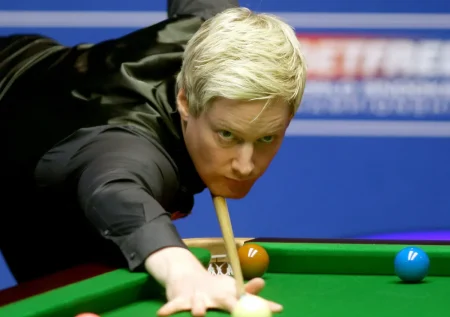

Snooker is a cue sport that is played on a baize-covered table with six pockets. It is one of the most popular cue sports in the world. The object of the game is to score more points than the opponent by potting balls into the pockets.
The game is played with a cue and 22 balls: one white ball, 15 red balls, and six balls of different colours. The player must first hit a red ball with the cue ball, and then pot the red ball into a pocket. If successful, they then must hit a coloured ball, and so on. If the player pots the white ball, they score either six or seven points, depending on whether they hit it first or second.
The player who scores the most points wins the game. A match is typically contested over a series of frames, with the winner being the first to win eight frames.
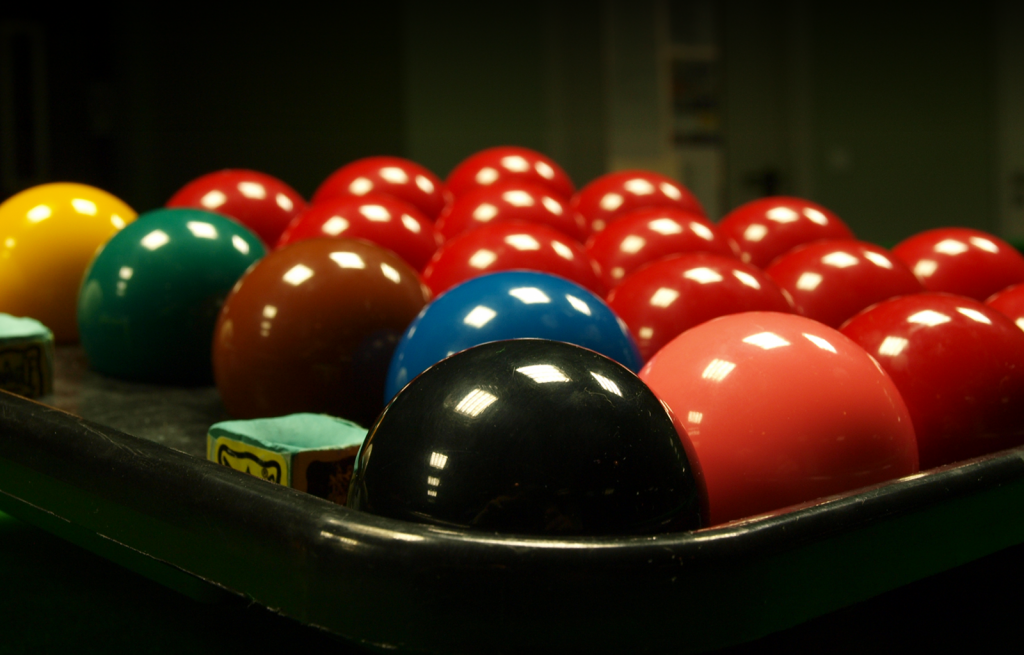
The game of snooker is played with 22 balls. There are 15 red balls, 6 yellow balls, and one black ball. The other ball is a white cue ball. The goal of the game is to sink all of the red balls and then sink the black ball. Points are awarded for sinking each type of ball. The red balls are worth 1 point each, the yellow balls are worth 2 points each, and the black ball is worth 3 points. If you sink a shot that includes more than one type of ball, you will be awarded the points for the type of ball that was sunk first. For example, if you sink a shot that includes a red ball and a yellow ball, you would be awarded 2 points (the value of the yellow ball). If you make a mistake and sink the cue ball, or if it goes off the table, you will lose 1 point.

A snooker cue, also known as a billiards cue, is a long stick made of wood or other materials that is used to strike balls in the game of snooker. The cue is an important part of the game and must be used with great precision if the player wants to make accurate shots. cues can vary in length from about 48 inches to 54 inches, and are typically about 1.5 inches in diameter. They are typically made of ash wood, but other materials such as maple and rosewood are also common.
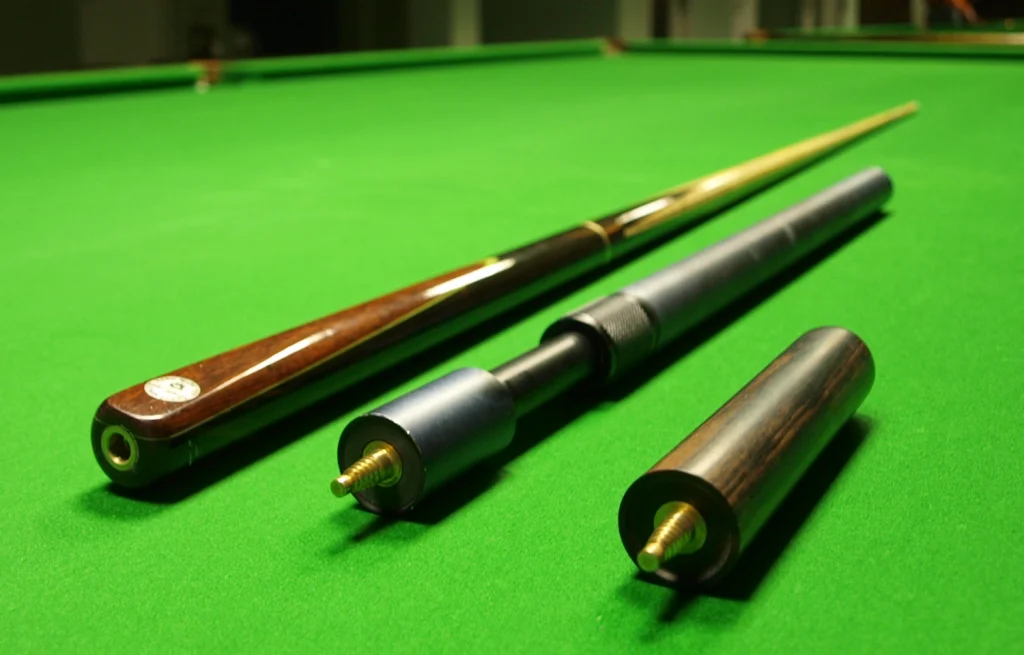
The tip of the cue is usually made of leather, and is glued on to the end of the cue. This tip is used to strike the ball, and must be kept in good condition if the player wants to make accurate shots. A well-maintained tip will provide a player with more control over the cue ball, and will result in more successful shots.
Cues can be bought pre-made from a variety of retailers, or they can be custom-made by a skilled craftsman. Most professional players have their own personal cue that they use for competition. cues are an important piece of equipment for any snooker player, and should be chosen with care to ensure that they fit the player’s needs.
A regulation snooker table is 12 feet long and 6 feet wide. The playing surface of the table is covered in green baize, which helps to ensure balls roll true. There are six pockets on the table, three on each side. The table is typically set up so that the black ball is located at the foot of the table and the white ball is at the head. The object of the game is to pot all of the balls, with the exception of the black ball, into the pockets.
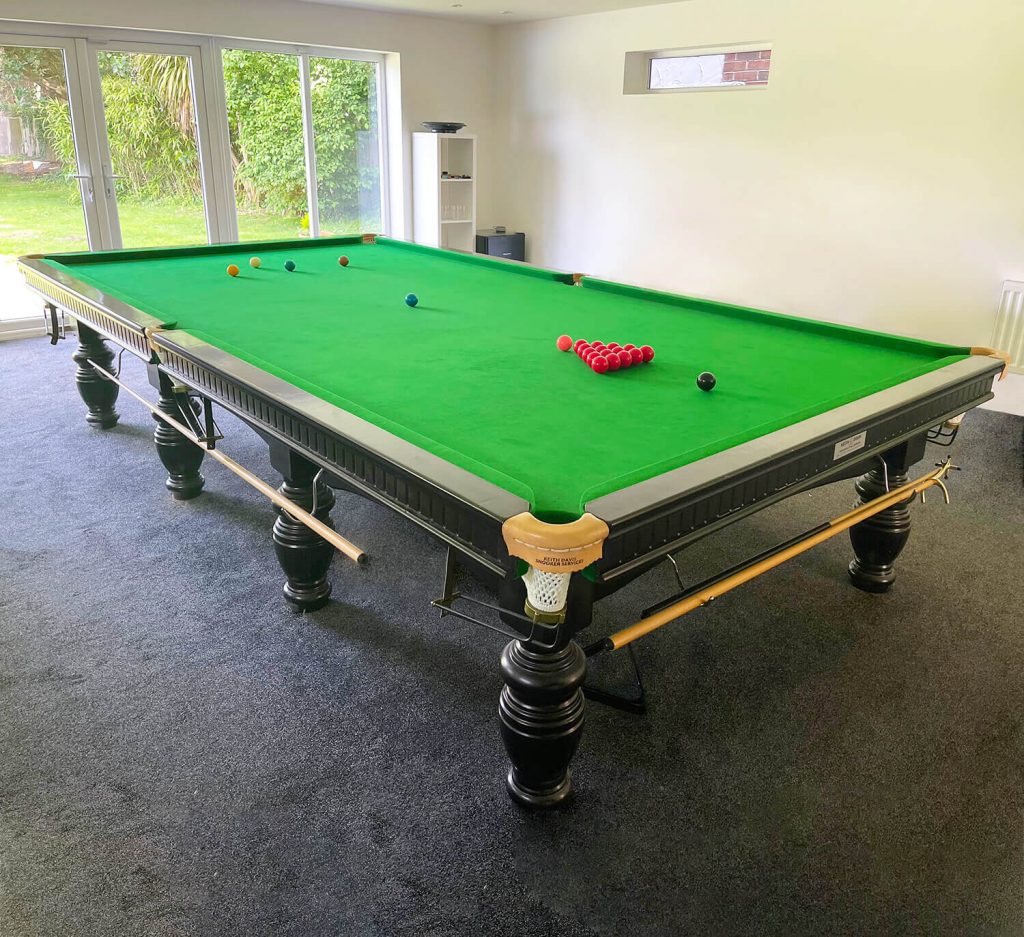
Snooker and billiards are two very similar games that are often confused for one another. They are both played on a green felt-covered table with cue sticks and balls, but there are some key differences between the two.
The most obvious difference is the size of the table. A snooker table is twice as long as a billiards table, and it has narrower pockets. The balls themselves are also different sizes, with the snooker balls being larger than the billiards balls.
Another key difference is the way the balls are struck. In snooker, players must first hit a red ball before they can pocket any other balls. In billiards, players can pocket any ball (including the black ball) by striking it directly with their cue ball.
The final difference is in the scoring system. In snooker, points are scored for sinking balls of different colors, with different point values for each color. In billiards, points are scored for either sinking balls or for causing your opponent to miss their shot. The player with the most points at the end of the game wins.
Both games are enjoyable to play, but they offer slightly different experiences depending on which one you choose. If you’re looking for a fast-paced game that involves lots of strategy, then snooker is probably the better choice. If you’re after something a bit more relaxed that still provides plenty of challenge, then billiards is a good option.
A snooker match usually consists of a fixed, odd number of frames, usually either best-of-nine or best-of-eleven. Each frame begins with fifteen balls placed in specific positions on the table: one white ball at the head spot, seven reds arranged into a triangle, one black ball at the top spot and two colours (a pink and a black) located near each side cushion. The player who pots more balls than their opponent wins the frame. In order for a player to win overall, he must score more points than his opponent across all frames of play.
The rules of snooker dictate that players must follow specific procedures when playing their shots; for instance they must strike a ball ‘on’, which means they must hit it with their cue first before any other ball on the table comes into contact with it. They also have to play according to certain fouls regulations; if they sink the wrong type of ball or knock over any pieces of equipment on the table then they will incur penalties or be forced to forfeit their turn altogether. In addition to this, players can also be awarded bonus points known as ‘baulk points’ by initiating certain shots such as cannons; this involves hitting one red ball so that it collides with another red ball before going into either pocket on either side cushion.
Fouls in snooker are an important part of the game and can have a significant impact on the outcome. Generally speaking, a foul is any action taken by a player that does not comply with the rules of the game. This can include things such as striking the cue ball before it has made contact with another ball, or potting one of their own balls before all of their opponent’s balls have been potted. Fouls will often result in penalty points being awarded to the opposing player, which can be crucial in deciding who wins a frame.
When it comes to fouling in snooker, there are a few key rules that must be followed by both players. For example, each shot must hit at least one ball other than the cue ball before any of your own balls can be potted. If this rule is not followed then it is deemed to be a foul and your opponent will be awarded four points as well as control over where they will place the cue ball for their next shot. Additionally, if you accidently move or touch any of the balls on the table then this will also result in a foul and result in four points being awarded to your opponent.
Another important element of fouling in snooker is getting familiar with what constitutes as a fair or legal break off shot at the start of each frame. A legal break requires that at least 4 object balls are potted during the initial break off shot and that no more than two consecutive cushions are struck by either your own or your opponents cue ball after contact has been made with an object ball.
Free ball in snooker is a game variant where a player can choose to place the cue ball on any spot of their choosing after a foul has been committed. This variation was introduced to make the game more interesting and challenging for players at all levels.
The free ball rule allows for a strategic approach to playing, as players can choose to place the cue ball wherever they would like. This can be used to set up difficult shots or safe shots depending on one’s playing style and skill level. Furthermore, this rule also serves as an opportunity to regain control of a frame after having committed a foul by giving players another shot that they may have not otherwise had.
When using the free ball rule, it is important for players to keep in mind that they must nominate a color before striking the cueball. Failing to do so will result in a foul being called, nullifying any potential points that could have been made with the shot and resulting in loss of turn. Therefore, it is essential for snooker players to think carefully when deciding how and where to play their free ball shot, as it could prove quite costly if done incorrectly.
Miss in snooker refers to when a player fails to hit any object ball with the cue ball during a shot, whether it be because of an accidental miscue or incorrect aiming. This counts as foul play and the incoming player gains two penalty points while they are awarded the next turn instead. A miss may also occur if no object ball is potted within three successive shots of their break – this results in the frame being awarded to their opponent or deemed “lost on a miss”.
For any given frame, only three consecutive misses are allowed, otherwise it’s classed as four consecutive fouls and therefore results in losing that frame; however, if neither player manages to pot any ball within three successive shots then a re-rack takes place whereupon both players have another chance at scoring points. As such, missing can prove quite costly for aspiring snooker players so it’s important for them to practice their aiming skills so that they are able to pocket more balls and avoid forfeiting frames unnecessarily.
The end of frame in snooker is an exciting part of the game, as it typically signals that a player is close to achieving victory. The end of frame is when one player has potted all fifteen balls and there are no more to be played. In professional snooker, the frame ends when both players have potted a maximum number of points (typically seventy-nine) or when a player has achieved victory by potting the final black ball. This can also be referred to as ‘clearance’.
In order for the frame to come to a close, a player must potted all fifteen balls on the table in sequence – starting with either reds or colours depending on who won the preceding frame – and then proceed to pot any other colours or blacks. Unlike pool where only three shots are needed to clear the table, players in snooker need to plan ahead and use strategy in order ensure they win the frame. This makes for an intense and thrilling finish that may take several turns before it’s over.
Once a player has cleared all fifteen balls from the table and achieved victory, they will receive points for each ball they have potted according to their colour value; red (1 point), yellow (2 points), green (3 points), brown (4 points), blue (5 points), pink (6 points), black (7points). It is important for players to consider these values when planning ahead and ultimately trying achieve victory. After this calculation has been made, the referee will confirm whether or not the frame has ended correctly, awarding victory accordingly.
A maximum break in snooker is an extremely difficult feat that requires a player to pot all 15 red balls and all six colors without missing a shot. It is considered to be the highest achievement possible in the game and is often referred to as a “147” or “maximum”. Achieving this score will often result in a standing ovation from the crowd and great recognition for the player who manages it.
The maximum number of points achievable in one visit to the table is 147, which includes 15 reds at 1 point each, plus 6 colors (yellow – 2 points, green – 3 points, brown – 4 points, blue – 5 points, pink – 6 points and black – 7 points) making up a total of 120 points. Additional bonus points can also be earned on a maximum break if certain criteria are met such as potting more than one color consecutively or potting two consecutive blacks.
Making a maximum break requires skill and precision as any mistake results in losing the opportunity of achieving this prestigious accolade. In order for it to count towards one’s personal best scores or rankings lists then it must be achieved officially during competition play or be witnessed by another person present at the venue. The World Professional Snooker Association has kept records of every officially recognized maximum break since 1983 with over 500 different players having achieved this feat since its inception.
The snooker season is made up of a number of major tournaments, the most important of which are the World Championship, the Masters, and the UK Championship. These tournaments offer the biggest prize money and the most ranking points, and are therefore the most coveted titles in the sport.
The World Championship is by far the biggest event on the snooker calendar. It is held at the world-famous Crucible Theatre in Sheffield, and is watched by millions of people around the world. The tournament lasts for two weeks, and features the top 16 players in the world. The winner is crowned World Champion, and receives a cheque for £250,000.
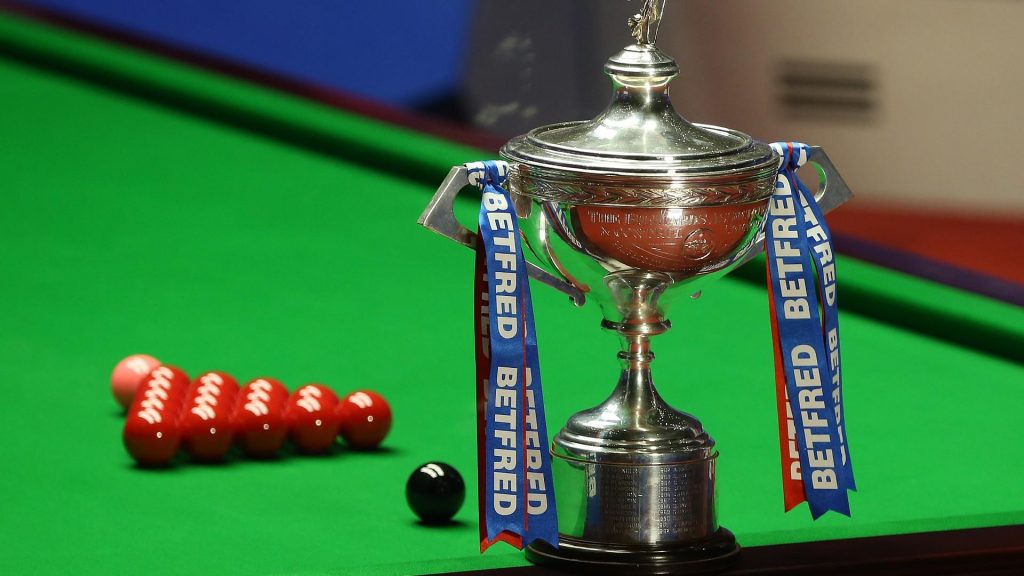
The Masters is another prestigious event on the snooker calendar. It is held at the Alexandra Palace in London, and features only the top eight players in the world. The winner receives £200,000 in prize money.
The UK Championship is another prestigious event on the snooker calendar. It is held at the Barbican Centre in York, and features 128 of the best players in the world. The winner receives £70,000 in prize money.
Some of the most famous snooker champions in the world are Ronnie O’Sullivan, Stephen Hendry and Jimmy White. O’Sullivan is known as “The Rocket” for his fast play, and is one of the most successful players in the history of the game, having won five World Championships and seven Masters titles. Hendry is the most successful player in terms of world titles, with seven, although he has since retired from competitive play. White is one of the most popular players in the sport, and is known as “The People’s Champion” due to his passionate playing style and affable personality.
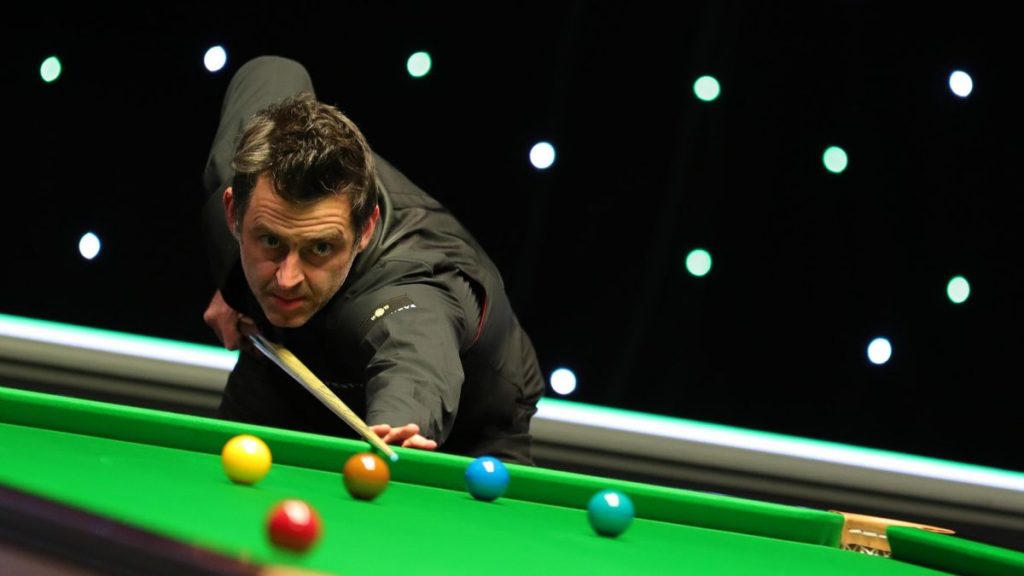
Snooker is a popular game in India. The country has a number of talented snooker players. Some of the best players in the world are from India. The game is growing in popularity in the country, and more people are taking up the sport.
The Indian Snooker Federation (ISF) is the governing body for the sport in India. It organizes tournaments and selects the national team. The ISF is working to promote snooker in India and to make it a popular sport.
The Indian team has had some success at international tournaments. In 2009, Pankaj Advani won the World Amateur Snooker Championship. In 2010, he won the World Professional Snooker Championship. He is considered to be one of the best snooker players in the world.
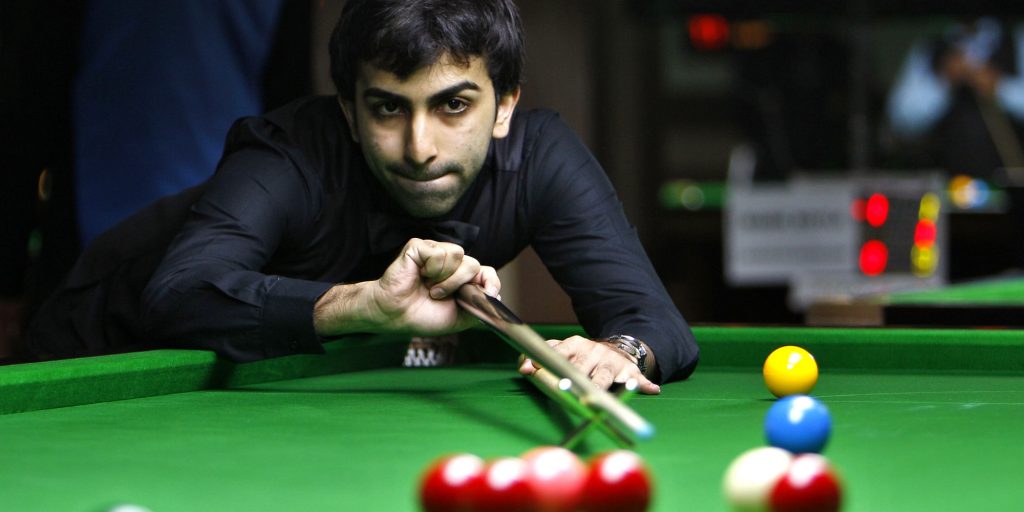
Other Indian players have also achieved success at international tournaments. Rupesh Shah won a gold medal at the Asian Games in 2006. Arvind Savur won a silver medal at the Asian Games in 2006. And Pankaj Sinha won a bronze medal at the Commonwealth Games in 2010.
The Indian team will be hoping to achieve even more success at future tournaments. The country has a lot of talented players, and with continued support, they can go on to win many more medals.